You have just relaxed your hair, and you feel like your tresses are shouting ‘happy’ as you bask in the blissful feeling that comes with having soft, supple tresses.
But wait, that shouldn’t be all.
It would be best to consider your relaxed hair care; things you should be doing to your hair before and after relaxing.
That way, you can enjoy your relaxed hair journey for a long time, avoid the possible damages relaxers can have on your hair, and not end up asking yourself, ‘why did I even relax my hair in the first place?’
If that is what you want to know, you have come to the right place.
This article will be providing well-researched tips on how to care for relaxed hair, ones that I have personally benefited from!
Let’s begin with things you should do to maintain the health of your relaxed hair.
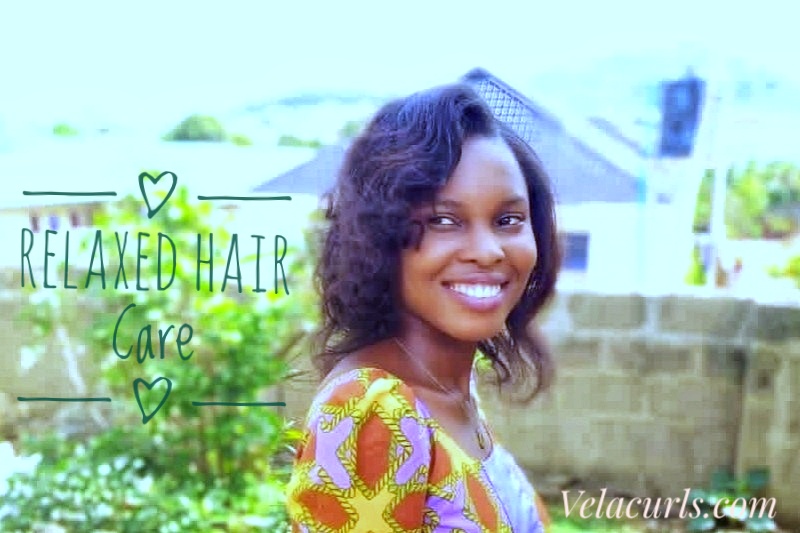
How to Maintain Relaxed Hair
1. Relax Professionally
As you may know already, the relaxing process goes a long way in the overall health of your hair.
Being such a simple yet essential process, retouching your hair should be done by a professional.
That way, you can be assured that only the parts of your hair that need a relaxer are being relaxed, and it is being done right.
Especially when you maintain one stylist, you get helpful information such as how often you should relax your hair, what type of relaxer is best for you, and when you need to trim your hair.
Well, if you inevitably have to relax your hair on your own, the least you can do is to get an appropriate relaxer, apply it right and get a friend to help you with the back sections.
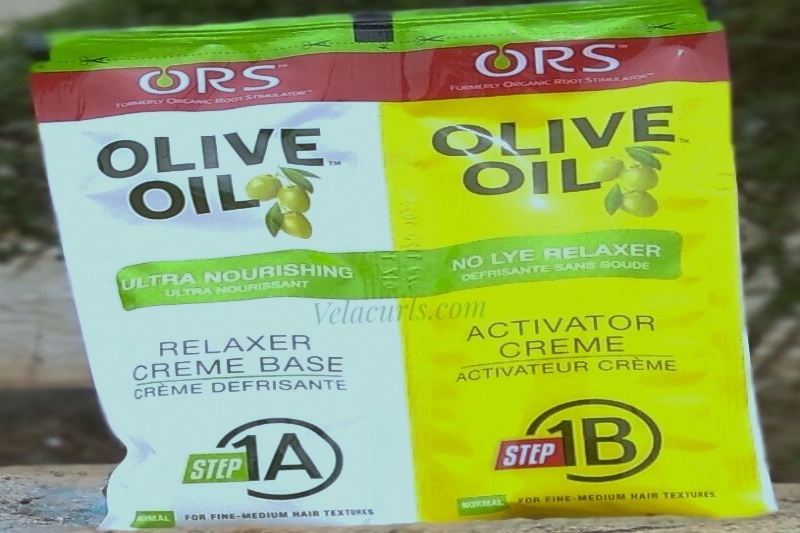
Here are steps to relax your hair effectively:
- Part your hair into four sections
- Base your hair using Vaseline or any hair oil
- Choose a section to start with either by clipping down the other three sections or braiding each loosely.
- Using an applicator brush (the back of a tail comb works well), apply a relaxer around that section.
- Start dividing that section into smaller portions (less than one inch) and apply a relaxer as you cut out each portion. Ensure to apply relaxer only to the roots to avoid damaging your hair ends.
- Once you have applied a relaxer throughout that section, use the back of your comb to massage it gently.
- Do the same to the other hair sections.
- Your edges should be the last place you apply the relaxer.
- Smoothen out all sections using the back of a comb.
- You may leave for about 10 minutes before washing.
2. Protein Treatment
Protein hair bonds are broken down to relax your hair strands.
A protein treatment is, therefore, essential to restoring protein and moisture balance in your hair.
It is more effective to get your protein treatment done after relaxing when your hair cuticles will be in the best condition to take in nutrients and restore strength.
Doing it before relaxing, however, will get your hair ready for the relaxer.
To maintain the health of your relaxed hair, include protein treatments in your monthly hair schedule.
Just like applying relaxers, getting a protein treatment is crucial to your hair health, so you should get it done at a trusted salon.
3. Washing
Your relaxed hair should not be washed too often; just once in two weeks would do.
If you are the type that hits the gym often, though, you might need to wash your hair weekly.
Over-washing hair leads to dryness as most shampoos strip the hair of necessary oil and moisture.
Speaking of shampoos, ensure to use the right shampoo – sulfate-free, hydrating shampoo – for your hair.
Asides from this routine washing, washing your hair after relaxing is critical.
Forget about saving time; you should rinse your hair for as long as it takes for the relaxer to come off ultimately.
Only after this should you apply neutralizing shampoo to wash your hair.
That way, you can ensure that the relaxer does not remain on your hair as this can be damaging.
4. Replace Synthetic Products with Natural Products
Relaxed hair requires natural ingredients more than any other hair type.
Hair products from harsh ingredients such as alcohol will further remove natural hair oils and lead to dryness.
For your relaxed hair care, opt for hair products from natural ingredients such as coconut or olive oil.
That way, your hair can stay nourished.
5. Do not Style Immediately after Relaxing.
Installing protective hairstyles (braids, cornrows, twists) immediately after relaxing puts unneeded tension on your sensitive scalp and newly relaxed hair strands.
You should wait for at least one week after relaxing before doing protective styles.
Also, most protective hairstyles last for a long time, and so they prevent you from doing something you should do; washing and deep moisturizing your hair a week after relaxing.
6. Avoid Frequent Relaxing
A key to maintaining your relaxed hair is not to overdo it.
Minimizing your hair’s contact with chemical relaxers helps keep it as healthy as possible and reduces the risk of chemical damage.
Resist the urge to go straight to relaxers each time you notice new growth in your hair.
Most times, retouching is needed only every 3-4 months.
7. Avoid Other Chemical Treatments
Chemical relaxers damage the hair’s natural structure to straighten the hair, and so adding different chemicals will be increasing the hair’s risk of damage.
That being said, you should avoid other chemical treatments such as hair bleaching.
If you need to dye your hair, choose a hair dye that is bleach and ammonia-free.
8. Detangling
Although relaxed hair may not knot and tangle easily, the few times it does, you should detangle it correctly.
Ensure that your hair is detangled each time before you wash to prevent unnecessary hair loss and breakage.
You should also use hair oil or conditioner before detangling to ease the process.
And importantly, start detangling using your fingers first and then a wide-toothed comb.
Never dip a tight-toothed comb in your tangled hair and try to pull out – sis that could damage your hair.
9. Co-washing
Co-washing is an excellent way to keep your natural hair oil and moisture intact while ensuring that your hair is clean.
Short for conditioner-washing, it is the process of washing your hair using a conditioner only.
The absence of shampoo helps to maintain your natural hair oils and moisture.
Taking Care of Relaxed Hair
The following are tips you should practice to care for your relaxed hair:
1. Eat Right
The type of food you eat affects your body, and your hair is no exception.
For healthy hair, you will need to include vitamins, omega supplements, and protein in your regular diet.
These nutrients contribute to your hair’s hydration and enrich the scalp.
Here are a few things to do to eat right for your hair.
Tips:
- Include egg and poultry in your daily diet
- Eat more sweet potato and spinach for necessary vitamins
- Include salmon fish, walnuts, and avocado in your diet for omega-three fatty acids
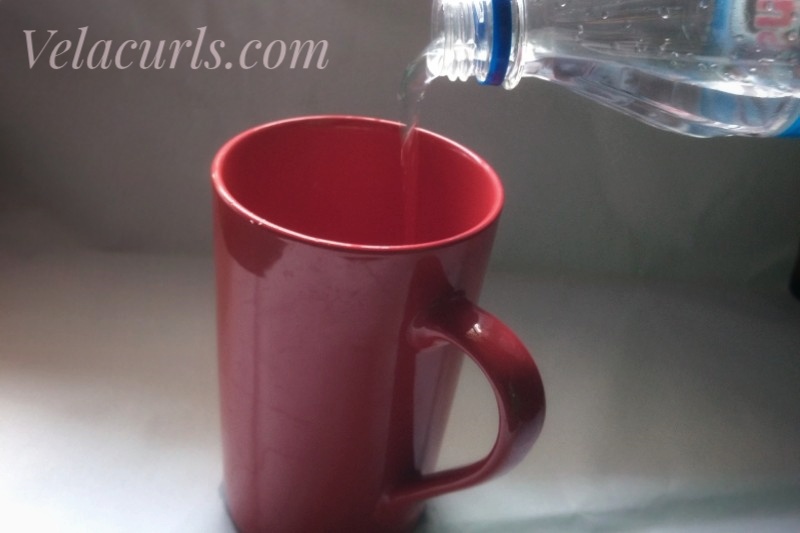
2. Regular Water Intake
Drink water! Drink water! Drink more water!
Not only is it good for your body, but it also benefits your hair.
Regular water intake makes your hair healthier and increases the rate of hair growth, which happens within scalp cells.
Without proper hydration, your hair growth becomes stunted, and hair ends may become weak and split.
Tip:
- Ensure that you take at least six glasses of water each day.
3. Protective Hairstyles
Doing more protective hairstyles help your hair ends to retain moisture since they will be unexposed.
They also prevent you from always having to comb your hair.
However, keep in mind that protective hairstyles should be done at least a week after you relax your hair.
Here are examples of protective hairstyles great for your relaxed hair:
Sewn-in weaves
Wearing wigs
Crochet braids
Box braids
Cornrows
Tips:
- Ensure to keep your hair moisturized even while you have the styles on by applying hair oils regularly
- Do not keep the same style on for more than two months
- Ensure that your hairstylist eases up on your edges when styling
- Search online for creative hairstyles
2. Avoid Heat Styling
Regular use of heat styling products such as hairdryers and flat irons can lead to heart damage and hair dryness.
The fact that your hair is relaxed gives you less reason to need them anyway, but occasional styling may require their use.
When this occurs, keep the following tips in mind.
Tips:
- Use a heat protectant before using hot tools on your hair
- Opt for other ways to smoothen your hair, such as heavy-duty moisturizing
- Allow your hair to air-dry after washing or use a low heat setting on the hairdryer
3. Night Care
Caring for your hair at night will help protect your hair ends and tresses and prevent tangling.
Also, it helps your hair to maintain body and volume.
When left unprotected, frictions occurring between hair strands and a cotton pillowcase can lead to hair damage.
Tips:
- Wrap up your hair at night
- Invest in hair accessories such as a satin bonnet or scarf to cover your hair before you sleep
4. Deep Condition
Chemical relaxers remove a substantial amount of moisture and oil from the hair when applied.
This simple process of applying a thick conditioning product to your hair, allowing it to penetrate, and rinsing out, helps to replace lost moisture and oil.
When choosing a deep conditioner for your relaxed hair, keep in mind to avoid greasy products as they only seal in present moisture, and do not moisturize the hair.
Tips:
- Deep condition your relaxed hair at least twice a month
- Always use a conditioner each time you shampoo
- Leave the deep conditioner on hair for about 15 minutes before rinsing out
- Try to use deep conditioners specifically for relaxed hair
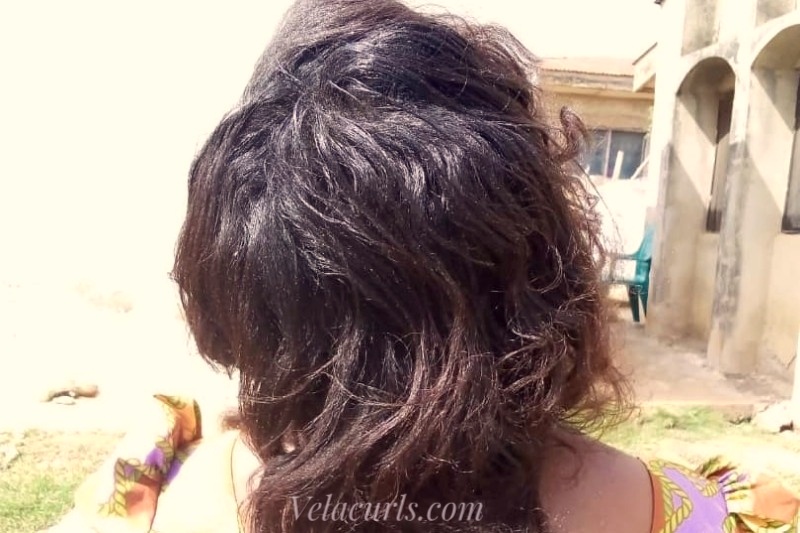
5. Trim
Hair ends eventually grow out and fall off the hair, no matter how good you take care of them.
When they split, it is necessary to trim immediately, as leaving them only aids further splitting.
That is not to discourage you from caring for your ends, though; caring for your relaxed hair will give it less reason to split, and the need to trim arises less often.
Tips:
- Check your hair for trimming each time you retouch
- Avoid getting worked up about trimming your hair ends; it is better to lose some than many in the future!
6. Oil Regularly
Regular oiling helps to repair your hair shafts, which are weak due to relaxers.
Hair oils such as coconut oil, argan oil, and olive oil provide many other benefits that your hair should not miss out on!
Tips:
- Regularly apply oil to your hair starting from the hair roots to the ends
- Oil your hair after applying a moisturizer; most hair oils help to seal in moisture
- To prevent your hair from feeling too oily, start with little quantity of hair oil
7. Moisturize
Leave-in conditioners, water and hair oils are all great options to provide your relaxed hair with needed moisture.
As mentioned, deep conditioning your hair also goes a long way in ensuring that your hair is moisturized.
Check out this list of top leave-in conditioners and moisturizers for relaxed hair!
Tips:
- While you start at the roots, ensure that your hair ends are also moisturized
- Opt for water-based leave-in conditioners
- Do a hot-oil treatment for your hair
8. Treat Gently
Your relaxed hair is fragile, especially after you just get a relaxer touch-up.
So whether you are combing, styling, or applying any of the tips above, you want to treat your hair as gently as possible.
Never brush your hair aggressively or forcefully detangle it.
And if someone helping you with your hair is doing just that, politely correct them, instead of making your hair suffer.
By doing so, you will be protecting your hair from breakage.
Tips:
- Use a wide-toothed comb when combing your hair
- Comb your hair starting from the ends and not the roots
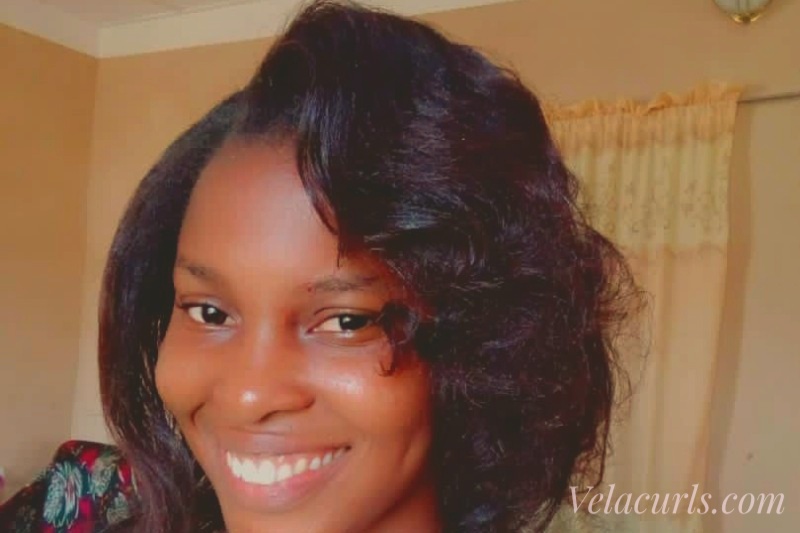
Knowing the Right Relaxer for your Hair
Your relaxed hair care begins with using the right relaxer for your hair.
Like every other chemical, using the wrong relaxer can cause damage to your hair.
Maybe not immediately, but at the very least, it makes your relaxed hair journey a very frustrating one as you end up with either under-processed or over-processed hair each time you retouch.
A breakdown of the type of relaxers and their compatible hair types will help you make the right choice!
Type of Relaxers
Lye Relaxer
These are sodium hydroxide relaxers, and they are designed for wavy or curly hair with a non-sensitive scalp. They relax the hair quickly.
No-lye relaxer
Calcium hydroxide relaxers are designed for sensitive scalps with wavy or curly hair textures. However, they cause hair dryness quickly.
Ammonium thioglycolate
This not very common type is compatible with fair, wavy hair with a soft texture.
Relaxers are also classified based on strength into mild, regular, and super.
If you have fine, color-treated hair, a mild relaxer is all you need.
Typical hair types require a regular relaxer. It is also useful for thick, stiff hair.
Super relaxer is for too full and coarse hair; using it on any other hair type can lead to breakage due to its large quantity of active chemicals.
Most relaxers indicate their type right on the label, so read before you buy. You can also consult your hairstylist to determine the best relaxer for your hair.
Extra Tips on Relaxed Hair Care
- Do not scratch or wash your hair before relaxing; you need that dirt buildup to prevent your scalp from tingling when relaxing.
- Chemical relaxers differ; be sure to read label instructions on how to apply before proceeding
- Avoid leaving relaxers on hair for too long; over-processing can lead to damage
- Ensure that the relaxer is applied directly to the hair roots.
Final Words
Many of us relax our hair to enjoy the ease and convenience that comes with it.
While you do that, never ignore your relaxed hair care.
Practice the tips above, and do not forget to provide your hair with moisture at every chance you get.
That way, you can enjoy healthy, beautiful relaxed hair for a long time!
Well done! Thrilled that you could still find time to do this…
Nice featured image, by the way!. ✨✨✨
Fine girl on Velacurls.
Warm regards,
Tomvad.com
Thanks a lot, Sir.
I guess I learned from the best.
Thank you again, Tomvad!
A very nice right up
Thanks, ethicsage.